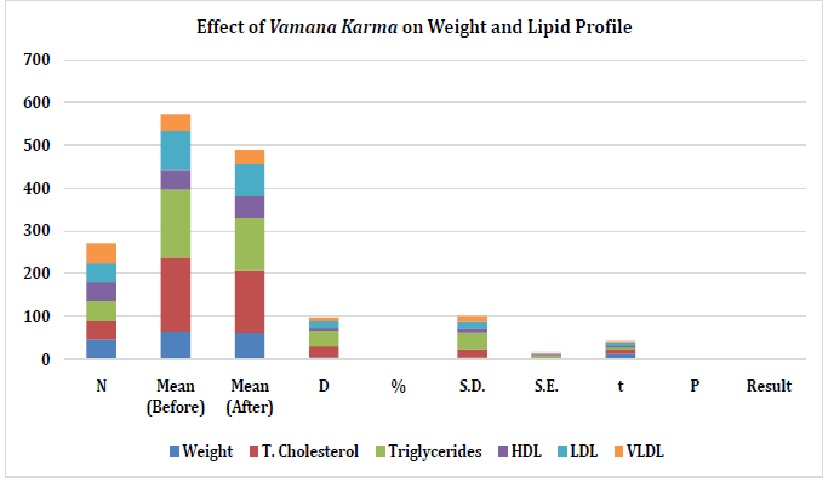A Clinical Study to Assess the Role of Vasantika Vamana on Lipid Profile and Weight in Healthy Individuals
Abstract
Panchkarma is the most integral part of Ayurvedic management. It is precautionary, promotive, conservative, therapeutic and reconstructive therapy. As per Ayurveda, the seasonal variations have an impact on the biological systems eliciting into the accumulation and aggravation of specific Doshas in a particular season like Kapha accumulation in Hemanta Ritu and aggravation in Vasanta Ritu, Pitta accumulation in Varsha ritu and aggravation in Sharada ritu and Vata accumulation in Grishma Ritu and aggravation in Pravrita Ritu. Vasantika Vamana is carried out approximately in the month of Chaitra -Vaishakha for the expulsion of vitiated Kapha dosha for forbidding the impending ailments like allergic bronchitis, allergic rhinitis, allergic sinusitis, bronchial asthma, migraine, psoriasis, indigestion, anorexia, lethargy, hyperacidity, dyslipidemia, diabetes mellitus, obesity, acne vulgaris, eczema, urticaria, etc. Total of 57 volunteers were registered in this study out of which 45 were coped with classical Vamana Karma. The study was accomplished on 45 evidently healthy volunteers, between the age group of 18 and 60 years to observe the changes in lipid profile and weight before and after Vamana procedure. The outcome of the study was significant.There was also an improvement in appetite (Agni) of the volunteers after Vamana. Volunteers with irregular bowel habits showed significant improvement. On an average the minimum, maximum, total dose and total days of Snehapana were 36.40ml, 187.21ml, 578.59ml and 5.01 days respectively. Average quantity of Madanaphala, Ksheera, Yashtimadhu Phanta and Lavanodaka was 5.81g, 1130.29ml, 3202.9ml and 2489.13 ml respectively.
Downloads

Copyright (c) 2023 International Journal of Ayurveda and Pharma Research

This work is licensed under a Creative Commons Attribution-NonCommercial-ShareAlike 4.0 International License.






